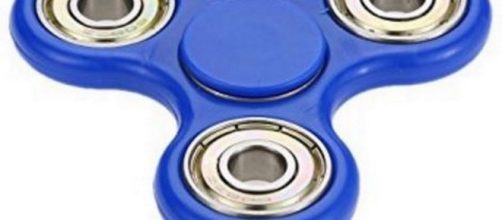fidget spinners are one of the latest fads fascinating kids these days. Although kids are fascinated with the fidget spinners, and there are rumors of addiction, what are they, and are they really worth the hype? Can kids really become addicted to these anxiety toys, or can they really help kids who have anxiety issues?
Shoddy science may be behind the fidget spinners
Time Magazine reported that the science behind the Fidget spinners is shoddy even though the manufacturers say they offer therapeutic benefits for children who have anxiety, autism, and even attention deficit/hyperactivity disorder (ADHD).
The fidget spinners currently dominate the best-seller lists for top toys and games on Amazon. The device, which consists of three weighted prongs that spin, are currently so popular that Toys R US has chartered jets to bring the devices to its stores. Teachers say the devices have become little more than a distraction in the classroom, and one teacher in Chicago has taken to wearing pants because they have bigger pockets, and hold more of the devices when she confiscates them.
Much has been made of the medical benefits of using these devices, but there's very little science to back it up. The devices were never created by behavioral scientists. Instead, the original idea was created by a Florida inventor named Catherine Hettinger who wanted to promote world peace.
Although Hettinger imagined children in Israel using them to promote calm in themselves instead of throwing rocks at police, the idea never took off and the patent expired in 2005. The devices resurfaced earlier this year when videos on YouTube of teenagers playing with them went viral. Although there is anecdotal evidence for the devices, it never led to any meaningful scientific studies, and most of what is said about the fidget spinners is based on marketing hype. Although anxiety toys may help children, science has yet to back up the use of these toys.
The story of the fidget spinners
Bloomberg reported that although Catherine Hettinger is credited with the invention of the device, she didn't invent it at all.
Although Hettinger did receive a patent in 1997 for a spinning device that sat on the finger, and she created them in her laundry room and sold them at state fairs, the toys she made bear little resemblance to the current crop of spinning toys. Hettinger did have the option of renewing her patent, and she did pitch her idea to Hasbro, but Hasbro declined.
An anonymous user created a Wikipedia page listing Hettinger as the inventor of the fidget spinner, and the legend was born. Reporters started calling her, asking her to tell her story. Then they reported that she wasn't receiving any of the proceeds from the sale of the toys even though her patent was expired. Except for the Wikipedia page, though, there is no evidence that she is responsible for the design and creation of the new toy.


